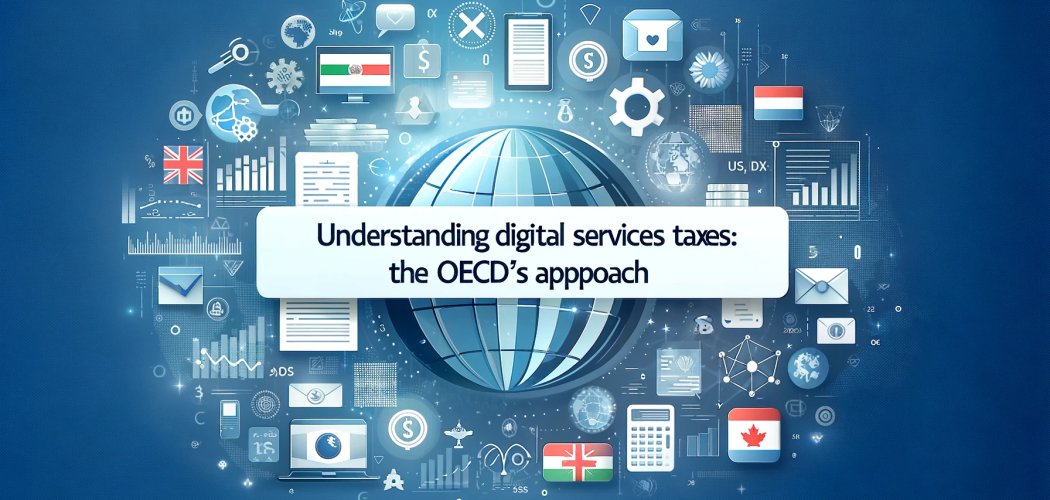
Understanding Digital Services Taxes: The OECD's Approach
Digital services taxes (DSTs) are a hot topic in the world of international tax policy. With the rise of digital giants like Google, Amazon, and Facebook, governments worldwide are grappling with how to tax these companies' digital revenues effectively. This article will delve into the OECD's approach to DSTs, exploring their significance, impact, and future.
Caption: Discussion on Tax Policy

Table of Contents
- Introduction to Digital Services Taxes
- Why Digital Services Taxes Matter
- The OECD's Role and Proposals
- Challenges and Criticisms
- Real-Life Examples
- The Future of Digital Services Taxes
- Conclusion
- FAQs
Introduction to Digital Services Taxes
Digital services taxes (DSTs) are levies placed on revenues generated by multinational enterprises from providing digital services. These taxes target companies earning significant income from activities like online advertising, digital marketplace transactions, and the sale of user data.
-
What Are Digital Services Taxes?
DSTs are designed to address the tax challenges posed by the digitalization of the economy. Traditional tax systems often struggle to capture the value created by digital services, especially when the companies providing these services do not have a physical presence in the country where their users are located.
Why Digital Services Taxes Matter
-
Revenue Generation
Countries implement DSTs to generate additional revenue from tech giants that benefit from their markets without paying corresponding taxes.
-
Fairness and Equity
DSTs aim to level the playing field, ensuring that digital companies contribute their fair share to the economies where they operate, similar to traditional businesses.
The OECD's Role and Proposals
What is the OECD?
The Organisation for Economic Co-operation and Development (OECD) is an international organization that works to build better policies for better lives. Its goal is to shape policies that foster prosperity, equality, opportunity, and well-being for all.
Caption: Freelancers Collaborating on Digital Services

OECD's Two-Pillar Solution
The OECD has proposed a two-pillar solution to address the tax challenges arising from digitalization:
- Pillar One: This pillar focuses on reallocating some taxing rights over multinationals from their home countries to the markets where they have business activities and earn profits, regardless of their physical presence.
- Pillar Two: This pillar aims to ensure that multinational enterprises pay a minimum level of tax, thereby addressing issues related to profit shifting and tax base erosion.
Challenges and Criticisms
-
Implementation Issues
Implementing DSTs can be complex, with significant challenges in defining the taxable base and ensuring compliance.
-
Double Taxation
One major criticism of DSTs is the risk of double taxation, where companies could be taxed both in the market country and their home country on the same revenue.
-
International Disputes
DSTs have led to trade tensions, particularly between the United States and countries implementing these taxes, as many affected companies are American.
Real-Life Examples
-
France's Digital Services Tax
France was one of the first countries to implement a DST, imposing a 3% tax on revenues from digital services provided to French users by large tech companies.
-
India's Equalization Levy
India introduced an equalization levy, a form of DST, initially targeting online advertising revenues and later expanding to include e-commerce transactions.
-
United Kingdom's Digital Services Tax
The UK has implemented a 2% DST on the revenues of search engines, social media services, and online marketplaces deriving value from UK users.
The Future of Digital Services Taxes
-
Global Consensus
The future of DSTs largely depends on reaching a global consensus. The OECD's efforts aim to create a standardized approach, reducing the risk of trade wars and double taxation.
-
Evolution of Tax Policies
As the digital economy evolves, so too will tax policies. Continuous dialogue and cooperation between countries are essential to developing fair and effective tax systems.
Caption: International Meeting on Digital Services Taxes

Conclusion
Digital services taxes are a crucial development in the modern tax landscape, addressing the challenges posed by the digitalization of the economy. While there are significant challenges and criticisms, the OECD's proposals offer a pathway towards a more equitable and efficient tax system.
FAQs
- What are digital services taxes? Digital services taxes are levies on revenues generated from providing digital services.
- Why are DSTs important? DSTs are important for generating revenue and ensuring fairness in the taxation of digital companies.
- What is the OECD's role in DSTs? The OECD is working to create a standardized approach to taxing digital services through its two-pillar solution.
- What are the main challenges of DSTs? The main challenges include implementation issues, double taxation, and international disputes.
- Can DSTs lead to trade tensions? Yes, DSTs can lead to trade tensions, especially between countries with large digital companies and those implementing the taxes.
- What is the future of DSTs? The future of DSTs depends on global consensus and the evolution of international tax policies.
Remember to share this article on your social networks for more insights!
.png)